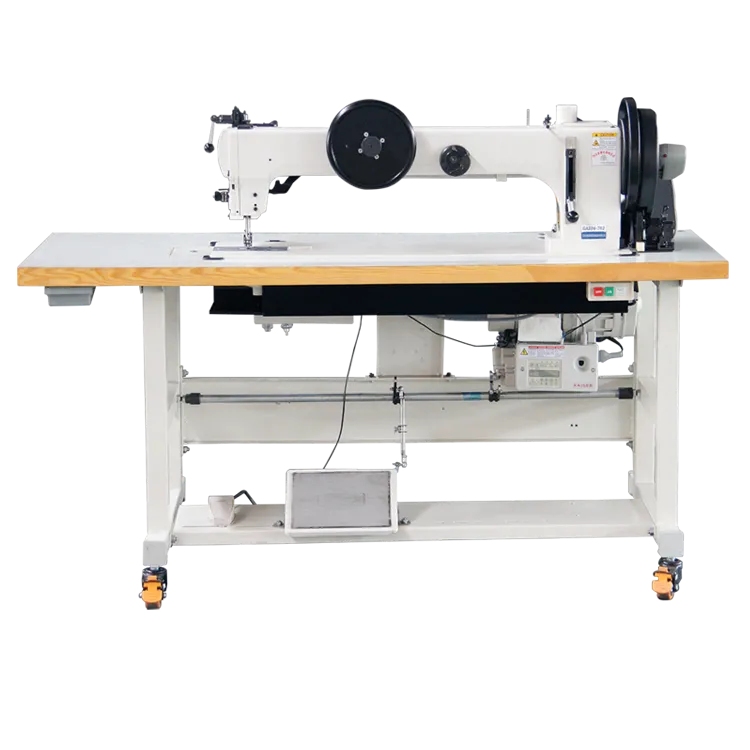Tips for Using Double Needles in a Sewing Machine Effectively
How to Use Two Needles in a Sewing Machine
Using two needles in a sewing machine can add a unique and decorative touch to your sewing projects. This technique is often used in quilting, fashion design, and various crafts to create parallel lines of stitching, adding depth and texture to your work. In this article, we’ll guide you through the steps to successfully use two needles in your sewing machine, ensuring that you get professional-looking results every time.
Understanding the Basics
Before diving into the process, it's essential to understand what using two needles involves. In a typical sewing machine, you may use one needle to create a single line of stitching. However, with a double needle setup, you can sew two lines of stitching simultaneously. This is particularly useful for topstitching, hemming, and creating decorative designs.
When using two needles, you should use a twin needle, which is specifically designed for this purpose. Twin needles are available in various sizes and styles, usually marked with the size and spacing of the needles, such as 2.0 mm or 4.0 mm apart.
Equipment You Will Need
1. Sewing Machine Ensure your machine can accommodate twin needles. Most modern machines do, but check your manual for specifics. 2. Twin Needle Choose the type and size that suits your fabric. A standard twin needle is great for most projects. 3. Thread You will need two spools of thread in the same color or coordinating colors to match your fabric. 4. Fabric Prepare the fabric you want to work on, making sure it is suitable for twin needle work.
Step-by-Step Instructions
how to use two needles in sewing machine

1. Prepare Your Sewing Machine - Begin by turning off your sewing machine to make any modifications safely. - Remove your standard needle from the machine and replace it with the twin needle. Ensure both needles are inserted securely.
2. Set Up Two Spools of Thread - Place two spools of thread onto the spool pins on your sewing machine. If your machine has only one spool pin, you can use a secondary method, such as placing another spool on a separate holder or using a thread guide. - Thread both needles simultaneously. Take one thread through the left needle and the other through the right needle. Follow your machine’s threading path, ensuring that each thread is correctly positioned in the tension discs.
3. Adjust Your Machine Settings - Set your sewing machine to a straight stitch for most applications, or choose a zigzag stitch if you want some decorative edging. - Adjust the stitch width appropriately; often, a width of 2.5-5mm is suitable, but consult your manual to ensure you're not exceeding the twin needle’s width capacity.
4. Testing Your Stitching - Before beginning your actual project, it’s wise to conduct a test stitch on a scrap piece of fabric. This will help you to ensure that the tension is correct, and the needles are properly aligned. Check the stitches to ensure they are even and that the fabric isn't puckering.
5. Sewing Your Project - Place your fabric under the presser foot, ensuring it is aligned properly. Lower the presser foot to hold the fabric in place. - Begin sewing slowly, ensuring that the fabric moves evenly through the machine. This technique requires a steady hand, as the twin needles must remain parallel.
6. Finishing Up - Once you’ve completed your stitching, raise the presser foot and cut the threads. Remove the fabric from the machine, and snip any excess threads carefully.
Conclusion
Using two needles in a sewing machine can elevate your sewing projects with its elegant look and professional finish. With a little practice, you can master this technique, allowing you to create stunning designs that stand out. Always remember to experiment with different fabrics and threads to discover new creative possibilities. Happy sewing!
-
Industrial Cylinder Arm Sewing Machine: Revolutionizing Heavy-Duty SewingNewsJul.28,2025
-
Cylinder Arm Sewing Machine: Perfect for Special Sewing ApplicationsNewsJul.28,2025
-
Cylinder Bed Sewing Machine: Essential for Sewing Complex MaterialsNewsJul.28,2025
-
Heavy Duty Sewing Machine: The Essential Tool for Industrial ApplicationsNewsJul.28,2025
-
Computerized Pattern Sewing Machine: Revolutionizing Precision StitchingNewsJul.28,2025
-
Heavy Duty Industrial Sewing Machine: Power Meets PrecisionNewsJul.28,2025
-
Leather Sewing Machine: The Industrial Standard for Tough MaterialsNewsJul.18,2025





























